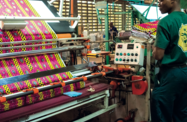Ghana’s gold mining industry is hoping for a healthier performance in 2015, with leaner mining operations and a push towards more value addition mitigating the impact of lower prices.
In recently released figures, the mining and quarrying sector was one of the main drivers of growth in the third quarter of 2014, with activities up 14.2% year-on-year according to latest data from the Ghana Statistical Service. However revised annual growth rates for the sector stand at just 2.9% in 2014, a result of a weakening price environment and part of the motivation behind a push to increase downstream processing.
Major contributor
Mining is a major contributor to the Ghanaian economy, with the minerals sector accounting for 37.6% of all merchandise exports in 2013, according to the Ghana Chamber of Mines (GCM). Gold mining is particularly important, with Ghana ranking ninth in the world in gold production, and gold accounting for more than 96% of mineral sector earnings. Dollar-denominated earnings from gold exports help support the value of Ghana’s currency – the cedi – with the fall in the international gold price in 2013 and 2014 an important contributory factor behind the cedi’s slide.
Weakening gold prices have hit the national economy. Ghana’s gold output rose to 3.193m ounces (moz) in 2013 from 3.166 moz in 2012, but total revenue from gold plunged to $4.6bn from $5.3bn. GCM’s figures for 2014 have yet to be released, but industry sources suggest that last year was one of stabilisation and adjustment to an environment of lower prices, with the global gold price falling to an average of $1266 per ounce.
This has led to consolidation among miners who are looking to rationalise their operations. Some mining operations have been restructured, including the Damang and Tarkwa mines operated by sector leader Gold Fields, a South African miner. This restructuring may stand firms in better stead, with leaner, more efficient operators well placed for any market recovery.
At the end of January, the government also firmed up plans to establish a major gold refinery plant by the end of this year, enabling Ghana to add value to about two-thirds of gold produced in the country and also boost earnings from gold production, according to the CEO of the Minerals Commission, Toni Aubynn. The proposed plant – to be run on a public private partnership (PPP) model – is expected to refine about 100 tonnes of gold per annum when it begins full operations.
Going for gold
Nii Osah Mills, Minister for Lands and Natural Resources, told local press in January that he expected 2015 to be a better year for the mining sector. “There is hope for the future because we can provide the best environment for mining within the West Africa sub-region.” New players were still entering the market, he noted, despite some miners being forced to downsize their operations following the fall in the gold price.
Asanko Gold, a Canada-based newcomer, announced mid-January that it expects to start ore extraction at its first gold mine in Ghana in the third quarter of this year, with the first gold pour in the first quarter of 2016. The Asanko Gold Mine (AGM), near the city of Kumasi in the Ashanti Region, is the company’s flagship asset with 7.9 moz of measured and indicated resources, including 4.9 moz of proven and probable reserves. The company also noted that the project is on budget, with $170m of the total $295m capital cost already committed.
By the end of the first quarter of this year, Asanko expects to publish the results of its feasibility study on a potential second phase, which would develop the adjacent Esaase deposit to increase production to 400,000 ounces a year, from a projected 190,000 ounces of gold in the first phase. This would make it one of Africa’s top ten producing gold mines outside South Africa.
Expensive to finance
While investments of this scale bode well for Ghana, higher input costs have put pressure on the industry, particularly during the 2013 squeeze of lower prices and higher input costs.
Currently, mining companies pay 35% corporate tax and a flat 5% royalty on revenues, set by the Ministry of Finance. Enacted in 2012 – and in line with similar mining reforms elsewhere on the continent – this replaced a regime of 25% corporate tax and royalties on a sliding scale of 3% to 6%. The government states the level of tax is consistent with other extractive sectors with its rising oil industry also paying a 35% rate.
However, even with the higher fiscal burden, Ghana’s mining sector still offers advantages for long-term investors, including an experienced workforce – more than 98% of the mining sector’s 17,000-plus workforce are Ghanaian – and measures to create a better regulatory environment for smaller operators.

